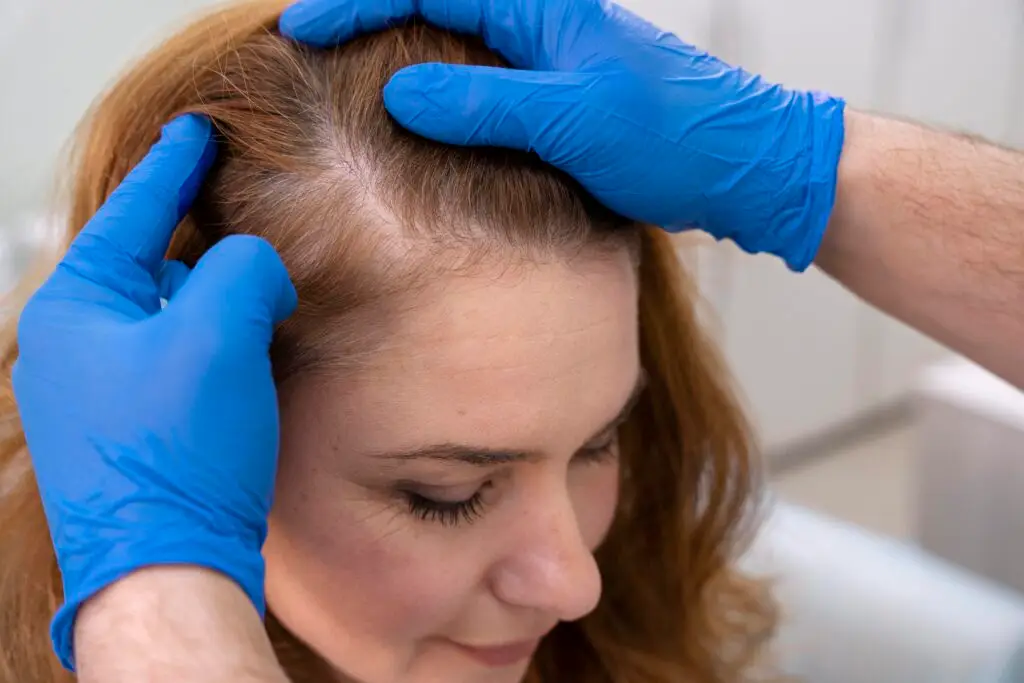- Medical
Hair Loss
Understanding Hair Loss
Alopecia is the medical term for hair loss. It can be influenced by genetics, age, hormones, immune conditions, medical treatments, nutritional status, and hair care practices. The hair cycle includes growth and shedding, and it is normal to lose 50 to 100 hairs per day. When shedding increases or density declines, the change can affect confidence and quality of life.
Each hair grows from a follicle that receives nutrients through the scalp’s blood supply. Follicles respond to signals from the body, including hormones and inflammation. Because many factors can contribute to thinning, an accurate diagnosis is the first step to effective care.
Common Types of Hair Loss
Androgenetic alopecia
Often called pattern hair loss. In men this typically shows as recession at the temples and thinning on the crown. In women it usually presents as diffuse thinning and a widening part. Hormonal signaling shortens the growth phase and miniaturizes follicles, which leads to finer, shorter hairs over time.
Alopecia areata
An autoimmune condition that causes patchy loss on the scalp and sometimes the brows, lashes, and body hair. Flares may be sudden. Early diagnosis and treatment improve the chance of regrowth.
Telogen effluvium
A reactive shedding that follows a stressor such as illness, high fever, surgery, childbirth, iron deficiency, thyroid imbalance, medication changes, or significant weight change. Shedding often begins about three months after the trigger. It usually improves once the trigger is addressed, although it can become chronic in some patients.
Other causes
Hair loss can also be related to scalp infections such as ringworm, inflammatory scalp diseases, traction from tight hairstyles, harsh chemical treatments, or scarring conditions. A careful exam helps distinguish these patterns.
Evaluation and Diagnosis
At Heritage Dermatology, your visit includes a detailed history, scalp and hair examination, and review of medical and family factors. When appropriate, we may order laboratory tests to evaluate thyroid function, iron status, vitamin levels, or other contributors. Clear diagnosis guides a targeted plan and helps set expectations for regrowth timelines.
Treatment Options
Plans are customized by type of hair loss, severity, and goals. Many patients benefit from a combination of therapies.
At home and over the counter
Topical minoxidil to support growth and prolong the growth phase
Nutritional optimization when deficiencies are present, such as iron, vitamin D, or zinc
Gentle hair care, reduced heat and chemical processing, and styles that avoid traction
Prescription therapies
Medicines that target hormonal pathways when appropriate
Anti inflammatory options for autoimmune and inflammatory forms
Oral agents that support hair growth for select patients
Procedural options
Growth factor injection therapy that uses a small blood draw, concentration of platelet derived factors, and precise scalp injections to stimulate follicles
Combination approaches that pair injections with topicals or oral medicines for a stronger response
Your dermatologist will discuss benefits, risks, and realistic timelines. Many treatments require consistent use for several months before progress is visible, and maintenance is often needed to preserve results.
Our Approach
We partner with you to identify the cause, reduce triggers, and build a stepwise plan that fits your lifestyle. Follow up visits track shedding, density, and scalp health so we can adjust treatments as your hair responds. Education on gentle care and scalp health is part of every plan.
If you are noticing thinning, widening of your part, or patchy loss, schedule a consultation with Heritage Dermatology. Together we will create a personalized strategy to protect your scalp, support regrowth, and help you feel confident in your hair again.

